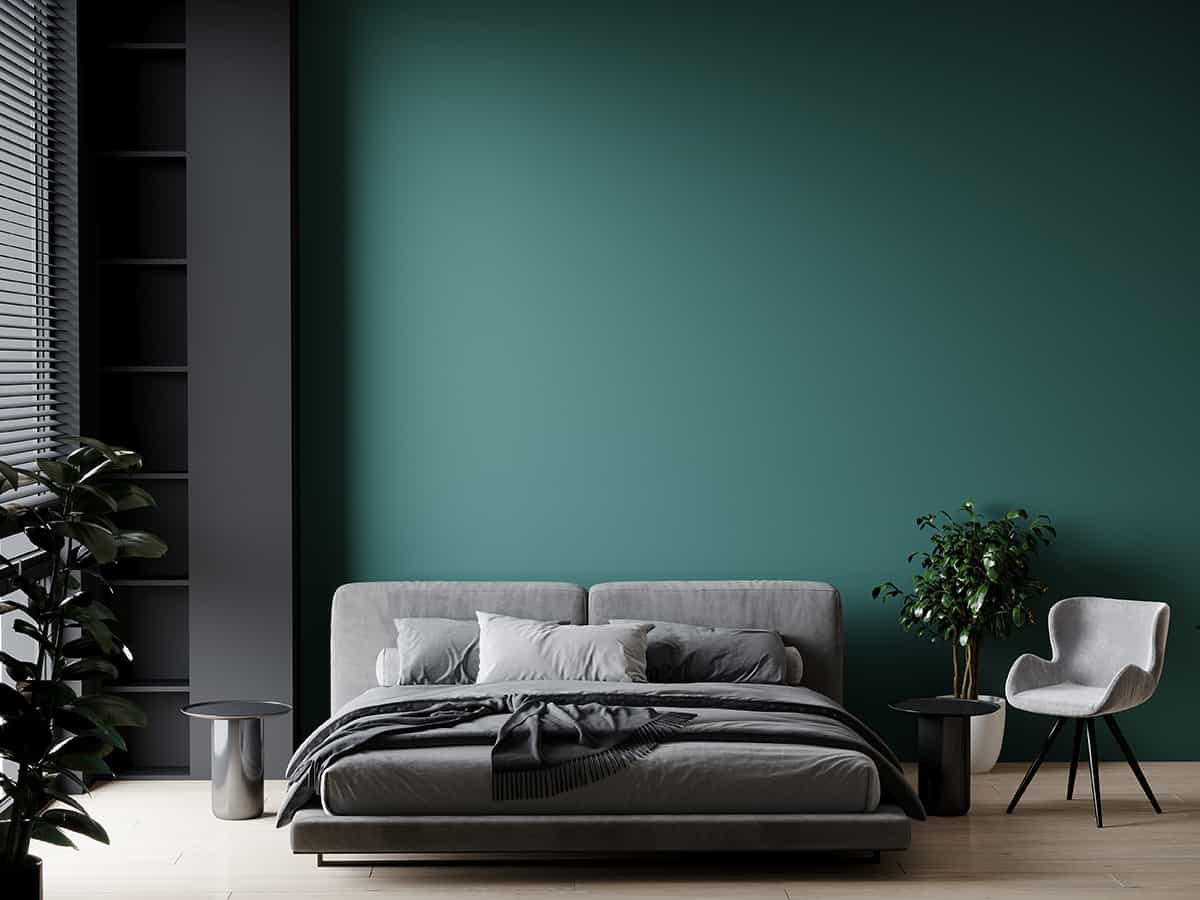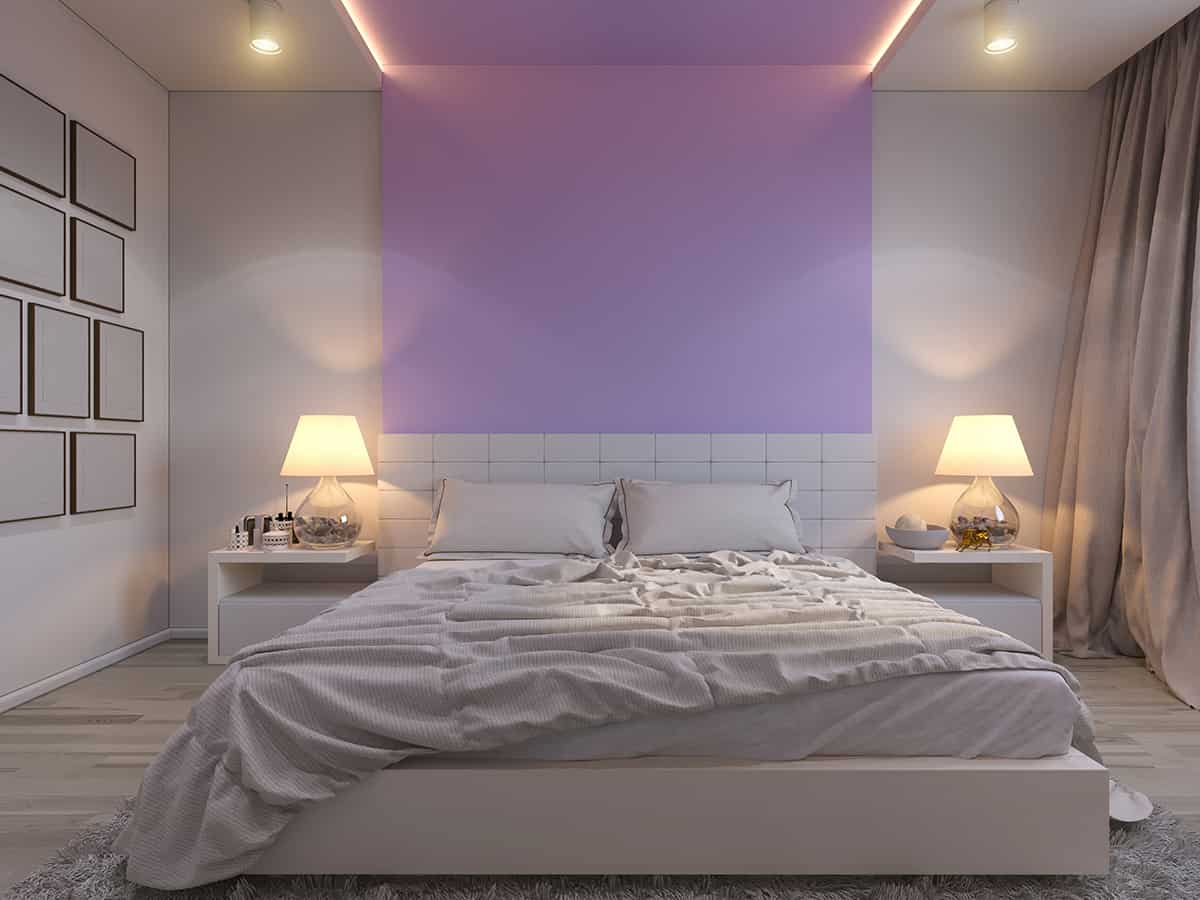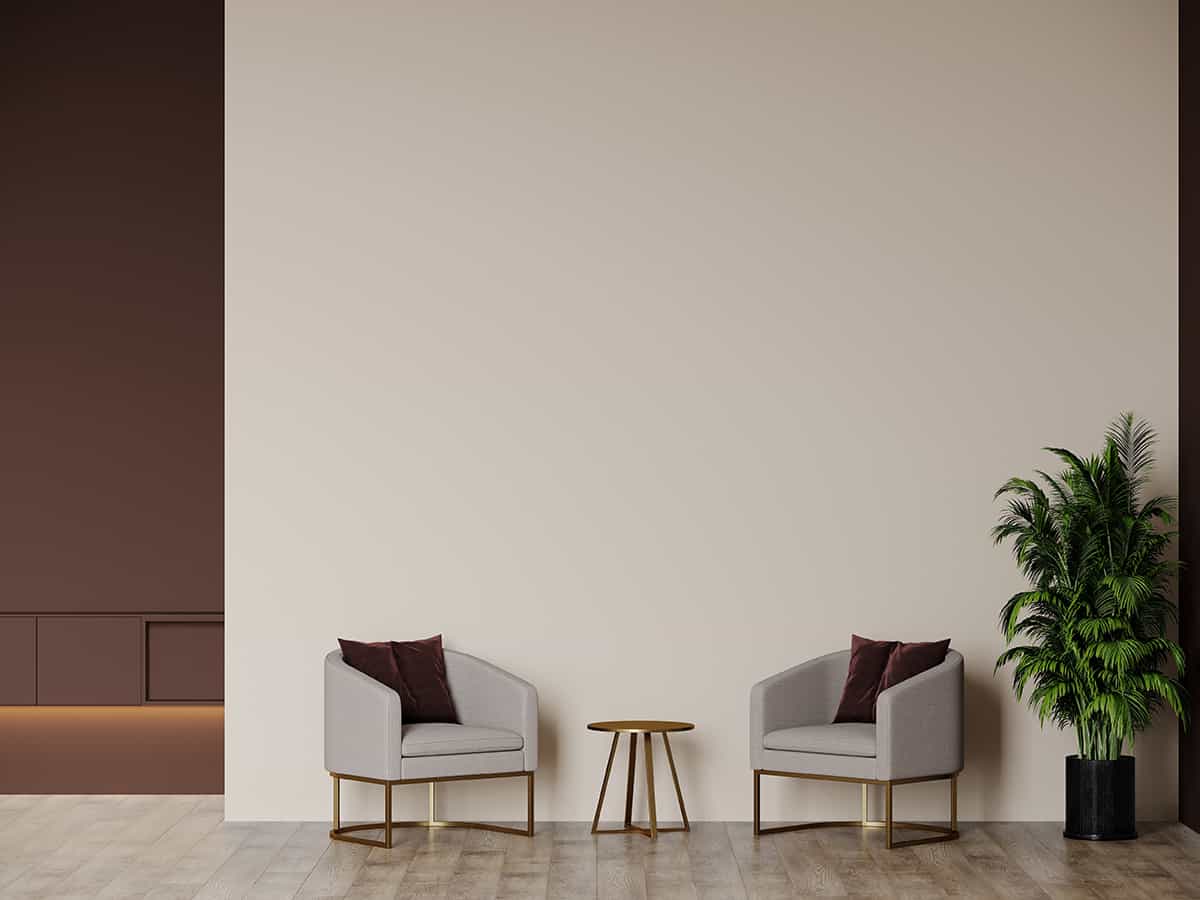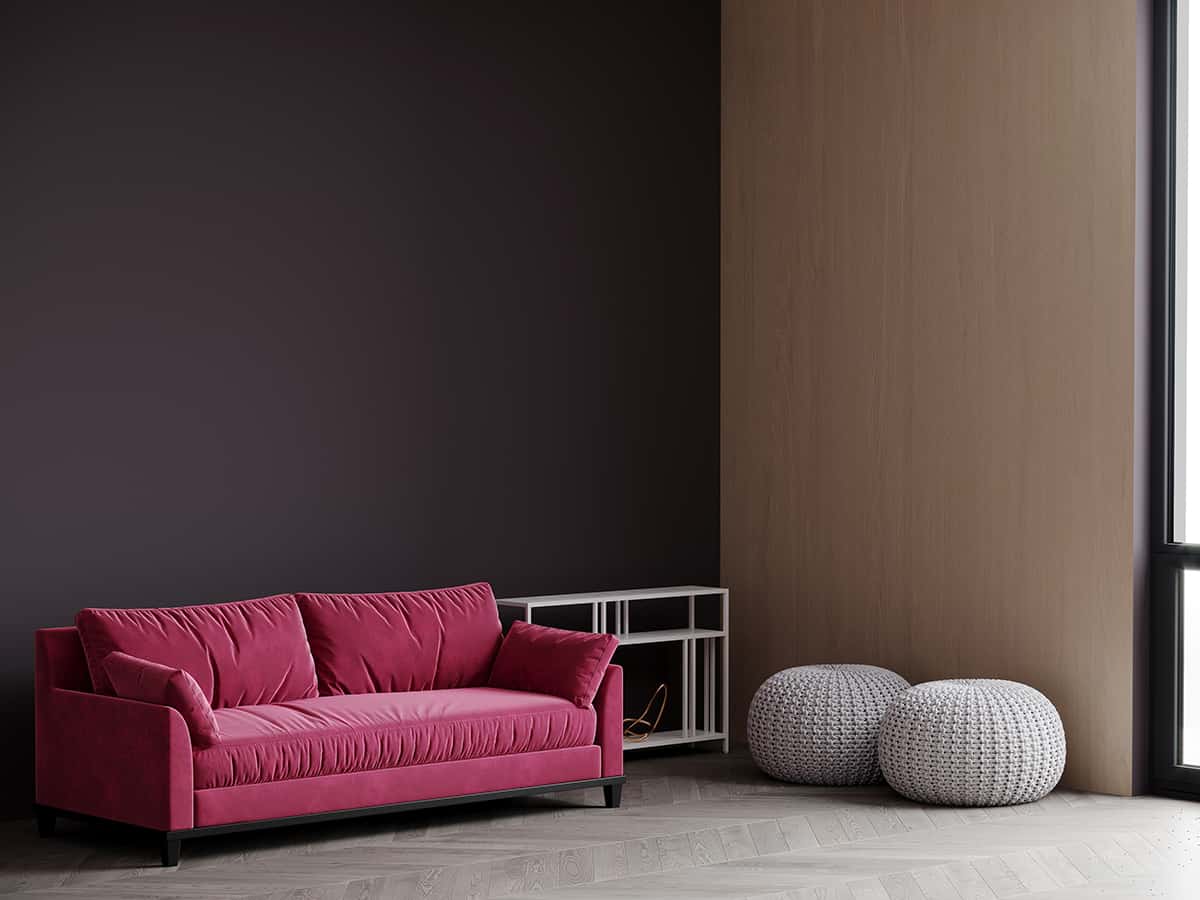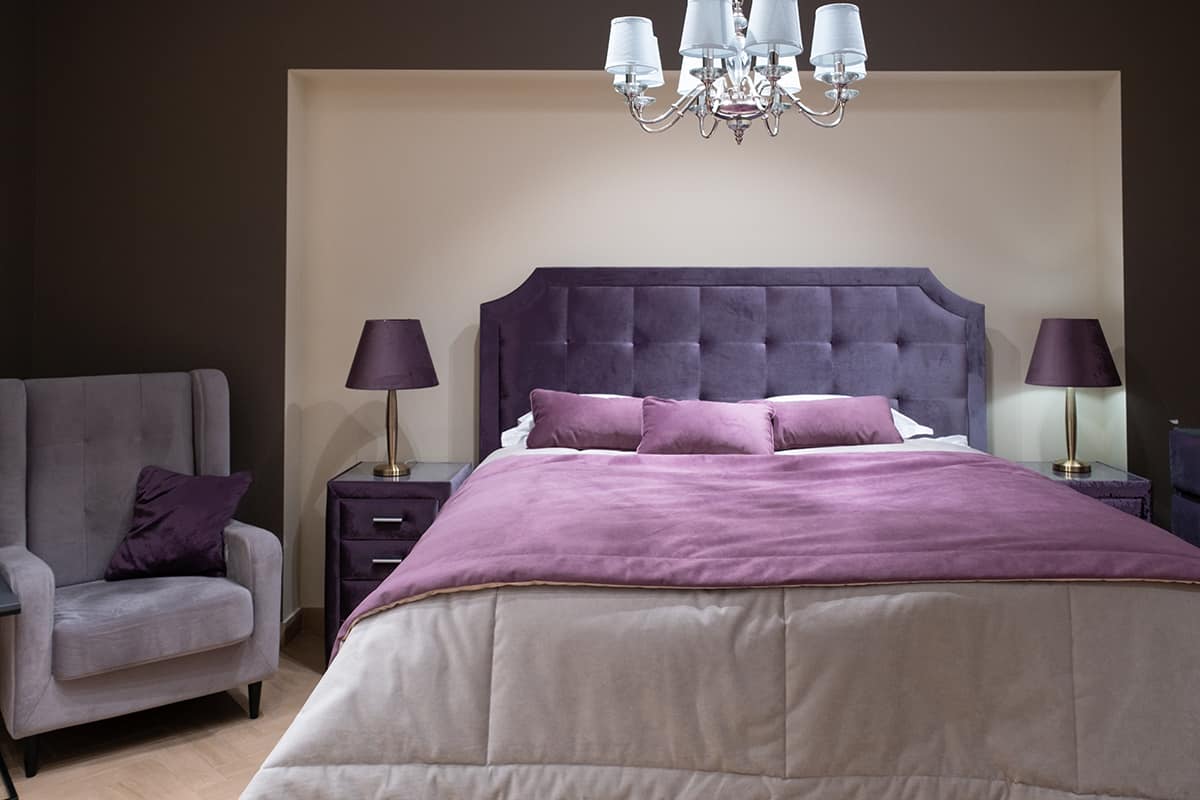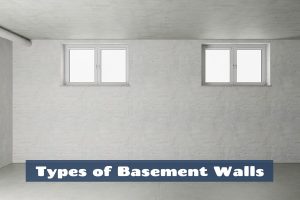There are many ways you can settle on your accent wall color. There might be a color you love that you want to use as the focal point in your room, so this could be your accent wall color and you can work back from here, designing a color scheme around your chosen color that works with the accent wall.
However, if you haven’t already got your heart set on an accent wall color then it makes sense to first think about the type of atmosphere you want in your room, and how to accentuate your favorite features in that room. You may also want to consider how different colors will be affected by the natural light in the room, and the style that you have a preference for.
Here we offer detailed guidance on how to choose an accent wall color and offer some example color schemes to consider.
What is an Accent Wall Color?
Before getting started on choosing an accent wall color, it’s helpful to ensure you have a clear understanding of the definition of an accent wall color. An accent color is one of the colors in a color scheme that accents against the other colors. It could accent the other colors in the room by contrasting against them, or it could accent other colors by offering additional depth.
For example, in a room where your main color is light gray, your accent color could be canary yellow. Since yellow and gray contrast against each other, because yellow is a warm shade and gray is a cool shade, this would be a contrasting accent. You could utilize your accent color by painting one wall in the room in this color, and this would then be your accent wall color.
In this example, all of the walls in a room would be light gray, except for one wall which is painted canary yellow. You would link the accent wall to other accent pieces in the room to create cohesion, such as a yellow vase on a coffee table, or yellow cushions on the sofa. Accent wall colors don’t always have to contrast, instead, they can offer a subtle accent.
This could look like a mid-blue room that has an accent wall painted in navy, or a dark gray room that has one wall painted in black.
Develop a Color Scheme
If you can develop a color scheme then choosing an accent wall color will be much easier, because you will just need to select one of the colors from your set color scheme. Actually settling on a color scheme, however, can be quite tricky if you’re unsure of exactly what you want.
Choose an energy
If you haven’t yet established a color scheme or an accent wall color, then first think about the kind of energy you want in a room, as this will guide you toward certain color palettes. All colors have different energy and by using them in a room you will be defining the atmosphere in the space. If you want a room to feel fresh and airy, then opt for cool off-whites with shades of pale green, gray, or blue.
For more cozy energy that makes you want to get snuggled up on the couch, opt for warm colors such as deep orange, dark red, browns, and beiges. For an intimate atmosphere, dark color schemes work best, while for creative energy in a room you’ll want a color scheme that features some intense contrasts, for example, a white room with a black accent wall, or a pale gray room with a bright orange accent wall.
Work with existing colors
If you don’t want to entirely decorate a room, but you want to give it an update, adding an accent wall color is a fun way to do this which doesn’t take a lot of effort. This can work particularly well if your existing color scheme is quite neutral, but it can also work in spaces that already have distinctive color schemes.
In a neutral space, for example, where all the walls are already painted cream, you can inject a shot of personality by choosing a striking accent wall color and then adding a few accessories to coordinate the whole space together. You could choose a dark color for some contrast, such as forest green, and then add some forest green cushions to the sofa, or paint a wooden coffee table in a forest green to match the accent wall.
If the wall colors have already been painted in a more vivid color, for example, mustard yellow, then you’ll have fewer choices for your shade of accent wall color. To make this work, your accent wall color will need to go with mustard yellow; this could include burnt orange, dark gray, navy, emerald green, or dusky pink.
You may also want to think about the existing colors of your home furnishings if you don’t plan on replacing these items.
For example, if you have red sofas then you’re going to need to find a color scheme that coordinates with red. By doing this, you can update the look and feel of your room without having to spend a large amount of money on new furniture and home accessories.
Choose your Accent Wall Color
Once you have settled on a color scheme, then choosing which of these colors will work best as your accent wall should be an easy task. Most color schemes will use three colors, which are the primary color, the secondary color, and the accent color. The primary color will typically be used for all of the walls in the room except for the accent wall.
The accent wall will typically be painted in the accent color, but it may also be painted in the secondary color. To define which of your three colors will be the primary color in your space, choose the one which is easiest to live with or which inspires the type of energy you want to feel in the space.
In a color scheme that includes mint green, pale gray, and turquoise, then you might opt for mint green as your primary color if you want the room to feel fresh and cool, however pale gray could also work as the primary color if you prefer a neutral style. Your accent wall will then be chosen from the remaining two colors left in your color scheme.
Consider Lighting
It’s important to spend some time in a room at different times of the day before deciding what color to paint it. If your room is north-facing and doesn’t get a lot of natural light, then painting an accent wall in a dark color is going to make the space feel even duller and potentially smaller.
You should also factor in the way that natural light affects your chosen paint colors since they can look quite different depending on the type of light the room receives.
Consider Layout
The layout of your room is also going to be a determining factor in choosing your accent wall color. If you want your accent wall in a bedroom to be the wall behind your bed, then you should consider what color your bed frame is, along with any other furniture you may have positioned on that wall.
For example, if your bed frame is black, then black would not be a good choice of color for the accent wall since it will make the bed frame blend into it. If your accent wall in a living room is going to be the fireplace wall, then choose a color that’s going to work in conjunction with the fireplace and its surround. If you want the fireplace to stand out, the accent wall color needs to be a contrasting shade.
Example Accent Wall Color Schemes
Nautical Neutrals
For a nautical yet neutral and casual vibe in a living room, a good color scheme is navy blue, oatmeal, and red. Paint all of the walls in oatmeal, except for the accent wall which should be navy blue. The sofas could be an oatmeal color with navy blue cushions which have red piping around the edges.
The floor rug could be navy blue, and the curtains could be striped in navy blue and oatmeal. Add subtle hints of red for a contrast and to tie the color scheme together, such as red candles, a red vase, or red photo frames.
Sultry Tones
For a sultry bedroom, opt for a color scheme of dusky pink, aubergine purple, and pale gray. Paint the walls in dusky pink with a dark aubergine accent wall.
Bedsheets and curtains can be pale gray, with a dusky pink comforter layered on the bed. Add a dusky pink rug to the floor, and coordinate the aubergine accent wall with other small accents around the space, such as an aubergine lamp shade, and aubergine-painted hooks on the wall to hang robes from.
